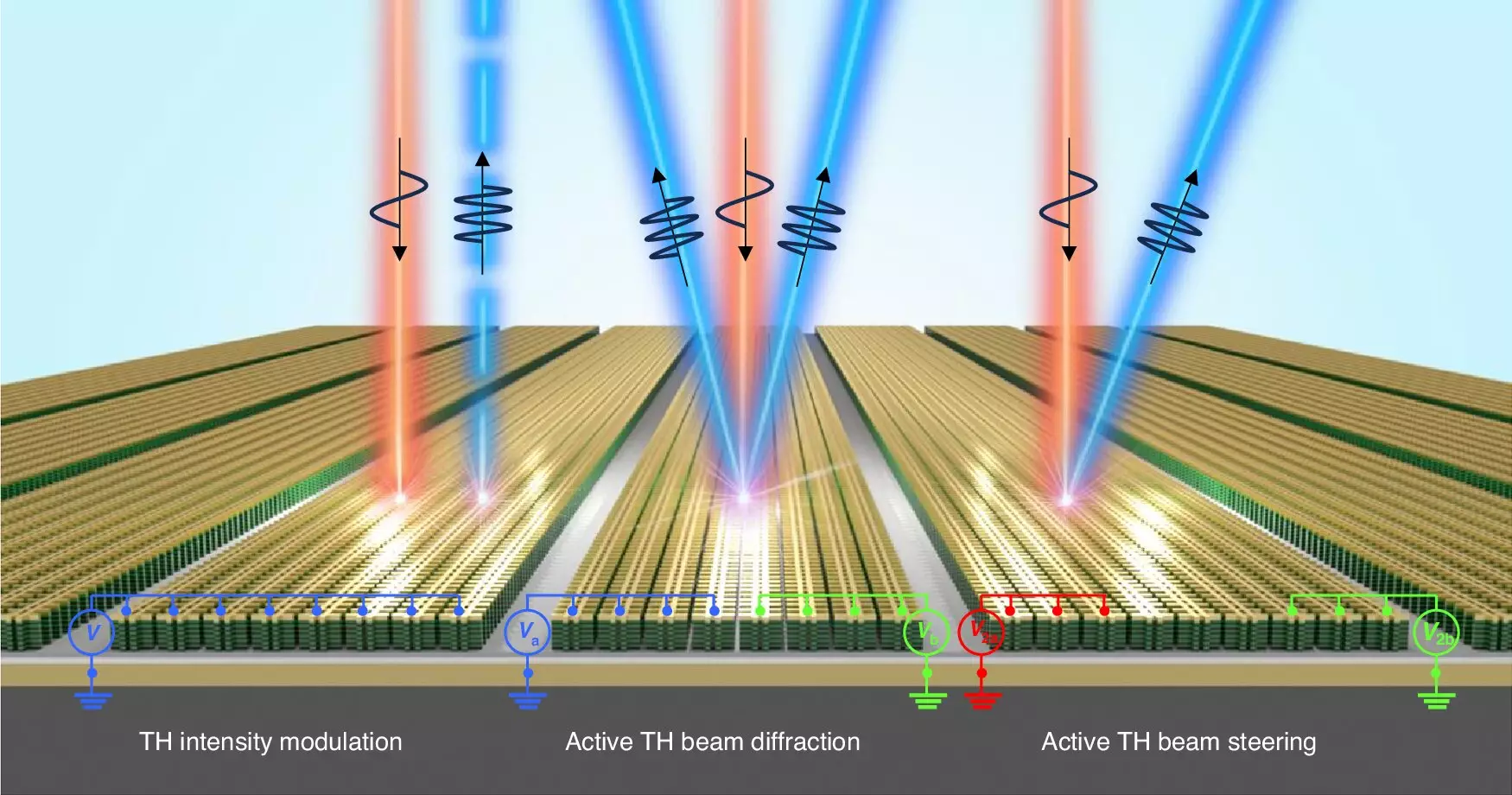A groundbreaking study has emerged from UNIST, highlighting an advanced nonlinear optical metasurface that has the potential to redefine communication technologies. Led by Professor Jongwon Lee from the Department of Electrical Engineering, this research not only demonstrates innovative experiments but also opens new frontiers for applications such as quantum light sources and medical diagnostics. As our demand for enhanced data transmission speeds and efficiencies grows, this technology promises to be a game changer.
The study centers around the creation of an intersubband polaritonic metasurface, designed to engineer third-harmonic generation (THG). This approach uniquely employs multiple quantum wells (MQWs) to control light at scales smaller than its own wavelength, a feat that significantly boosts the capabilities of optical technologies. The experimental implementation achieved a stark modulation depth of 450%, along with an impressive suppression rate of 86% for zero-order THG diffraction. Moreover, researchers were able to manipulate local phases beyond 180 degrees, allowing for precise THG beam steering. This level of control is unprecedented and indicates that the new metasurface can function effectively as an electrically adjustable optical component.
The implications of this advancement extend far beyond fundamental science. Nonlinear optics itself provides the framework for generating a spectrum of wavelengths from a single source of light, enabling far superior information processing compared to conventional single-wavelength lasers. The innovations stemming from Professor Lee’s research could lead to the development of incredibly compact and lightweight optical devices—some potentially as thin as paper, leveraging materials that are finer than human hair. This transformation signifies a shift toward miniaturizing technology without sacrificing performance.
Historically, the field of nonlinear optics has faced hurdles, particularly in terms of electrical control over light manipulation. Past technologies were often constrained by their inability to be effectively modulated, limiting their practicality for widespread application. However, the new metasurface introduces a solution to this limitation. By enabling voltage control over second-harmonic generation (SHG) and allowing independent modulation of THG properties, the research facilitates control over not just the wavelength, but also the intensity and phase of emitted light. This capability represents a leap forward in optical manipulation.
As light manipulation becomes more sophisticated, Professor Lee anticipates potential applications ranging from cryptography to dynamic holography and advanced quantum communication systems. The ability to adapt how light is used and manipulated opens a range of possibilities, creating avenues for improved quantum sensors and optimized light modulation. Seongjin Park further underscores that the properties derived from the specific semiconductor and metal composition are crucial for the metasurface’s performance, hinting at further research opportunities.
The emergence of this nonlinear optical metasurface not only represents a technological breakthrough but also lays the groundwork for future innovations across a spectrum of fields, marrying science with practical utility for next-generation optical technologies.


Leave a Reply